Long i – Book 2 of 5
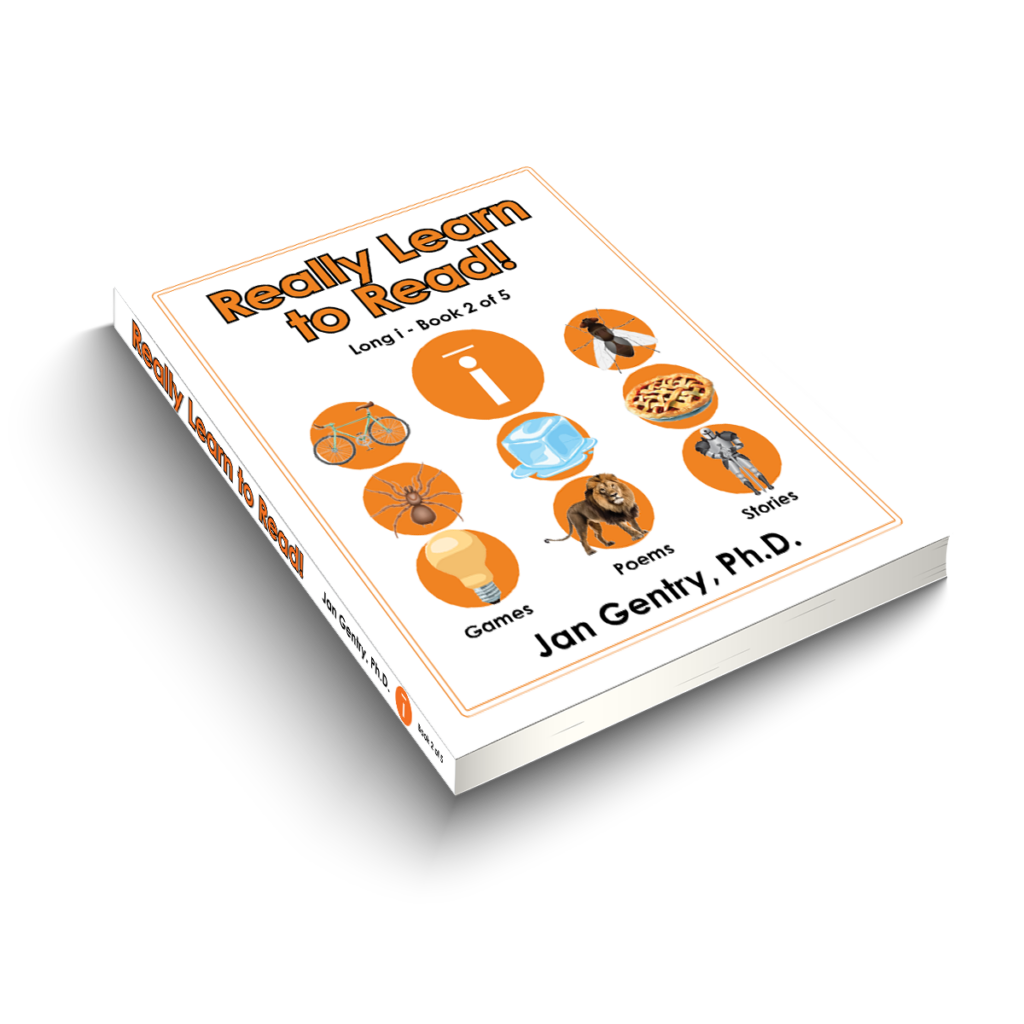
Book 2 in the Long Vowels Series continues to inspire a love for reading and motivates a deeper understanding of the English language. Long i purposely includes many words learned in Long a – Book 1, thus providing practice and mastery within engaging lessons that give learners a comfortable progression of skills on reading levels Grades 2-6. With colorful graphics combined with silly poems and interesting stories, readers are challenged to make long i words, read these long i word families and new sight words, and apply them in a variety of activity sections. Upon completing this workbook, learners will have become more efficient in decoding and encoding more complex text, and broadened their vocabulary. In addition to understanding literal text, readers have been progressively learning advanced comprehension strategies of inferring, questioning, and summarizing.
Student Edition
Make Words
As a first activity, readers match and write the beginning sounds (onsets) with the list of long i vowel pattern endings (rimes) if they decide that the sounds are real words. This interactive phonics game prompts learners to break down words into the smallest units of sound, realize that there are predictable spelling patterns in rhyming words, and take the challenge to spell as many words as they can. Make Words is a fun but valuable activity that helps readers successfully decode and pronounce the long i sounds in unfamiliar words with the same word patterns. This phonetic transfer of sounds increases reading fluency, a vital ability that enables readers to focus on understanding what they are reading, rather than on decoding each word.
Goofy Poems
After making word families, learners read four poems with words from Make Words and new sight words listed in a dotted box. Fluency is better ensured when readers instantly recognize words “on sight” without guessing or sounding them out. The poems are humorous and give practice in reading new words. Additional long i rhyming words not listed in Make Words are underlined in the poems to help readers recognize vowel group patterns, transfer their phonetic sounds, and experience reading success.
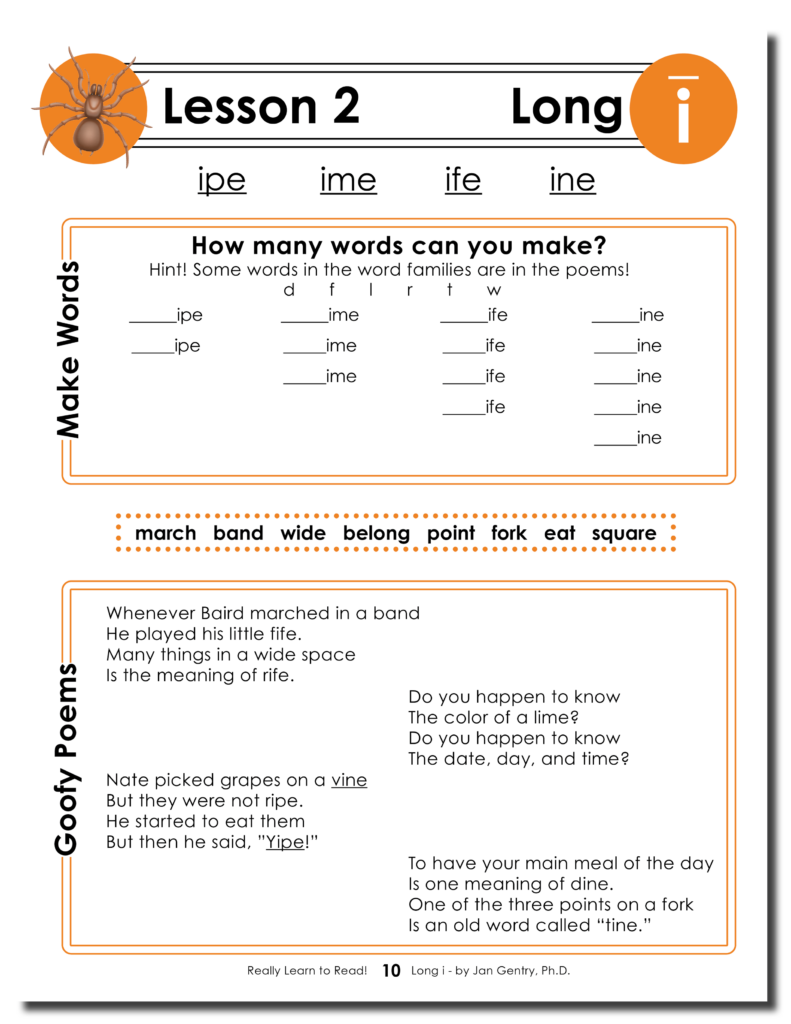
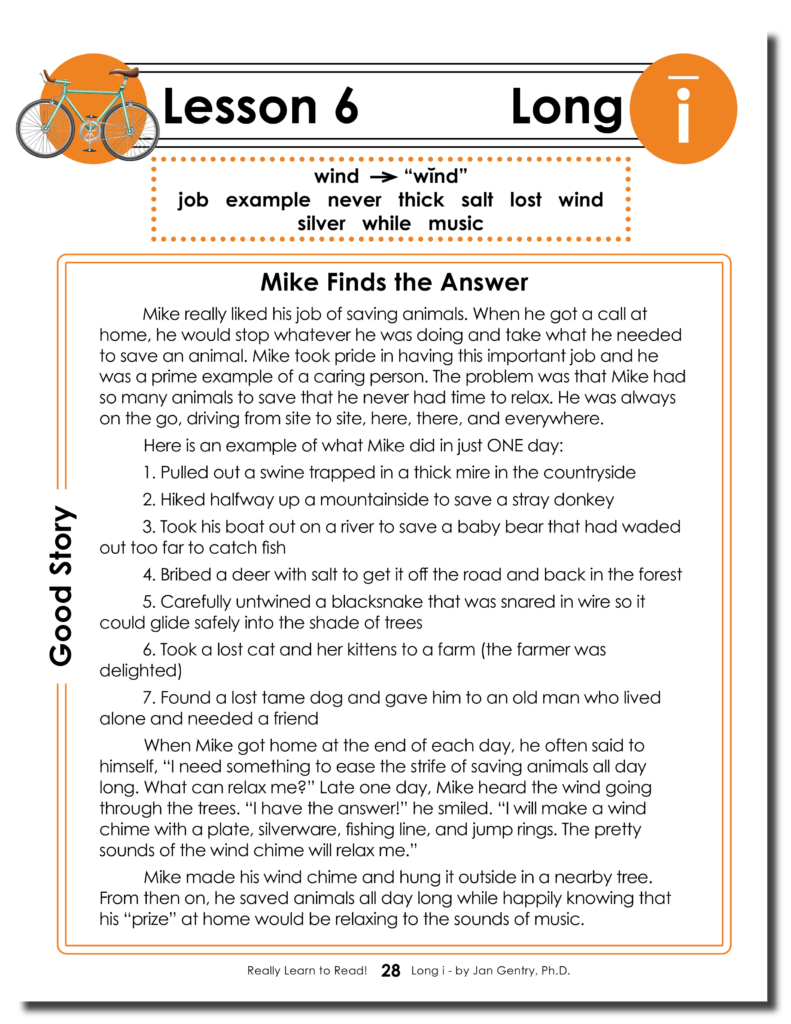
Story
Readers are given new sight words before reading a range of interesting stories that are entertaining, thoughtful, or based on real facts. Readers become increasingly familiar with long i word families and decode multi-syllable sight word vocabulary. The stories give practice with meanings of inflected endings, contractions, prefixes and suffixes, compound words, abbreviations, ordinal and cardinal numbers, fractions, dates, idioms, word symbols, and homographs (ex.- live → lĭv live →līv). The appealing stories engage the comprehension skills of critical thinking and using prior knowledge. As readers smoothly progress through Grades 2-6 reading levels with self-confidence, they embrace the power of reading.
Question & Answer
After completing each poem and story, readers answer a variety of questions and activities to reflect reading comprehension and strengthen other skills just learned. Activity and question formats include true & false, multiple choice, short answer, fill in the blank, and matching. Short answer responses support sentence construction and cohesion which, in turn, reinforce sentence structure and unity when reading sentences.
The Question & Answer section in Long i encourages readers to read with deeper meaning as they comfortably begin to develop their interpretive, critical, and creative comprehension skills. Questions and activities necessitate skills for using references, critical thinking, justifying answers, reinforcing vocabulary, identifying main ideas, making inferences, and creative thinking for problems/solutions. Additional skills include recall of facts from prior lessons, understanding idiom meanings, and following directions. This activity section also promotes use of spelling rules and reinforces writing skills as learners encode words and clearly express their thoughts.
Draw a Picture
After completing the Question & Answer story section, the reader is given a picture box with directions on what to draw. This is a fun but important activity that reflects comprehension and creativity. Readers make pictures in their minds as they read, such as visualizing scenes, characters, actions, or details from the story. The picture box directions inspire recall of these mind pictures, and learners more deeply understand what they have read as they engage in their artistic illustrations.
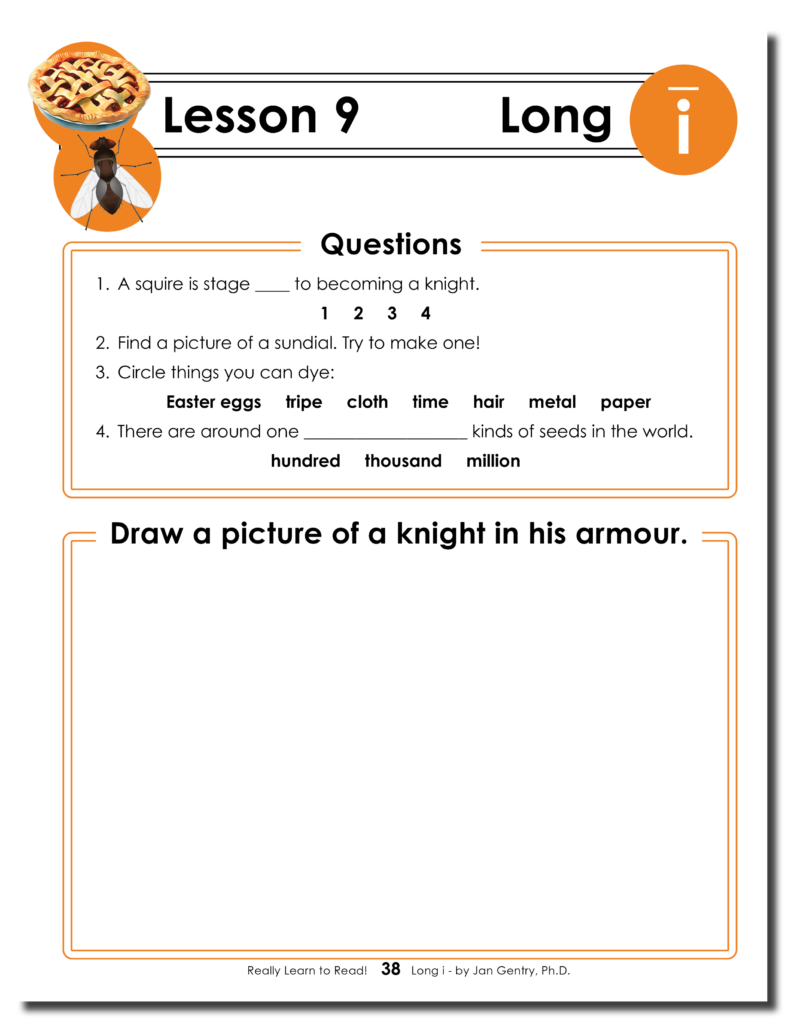
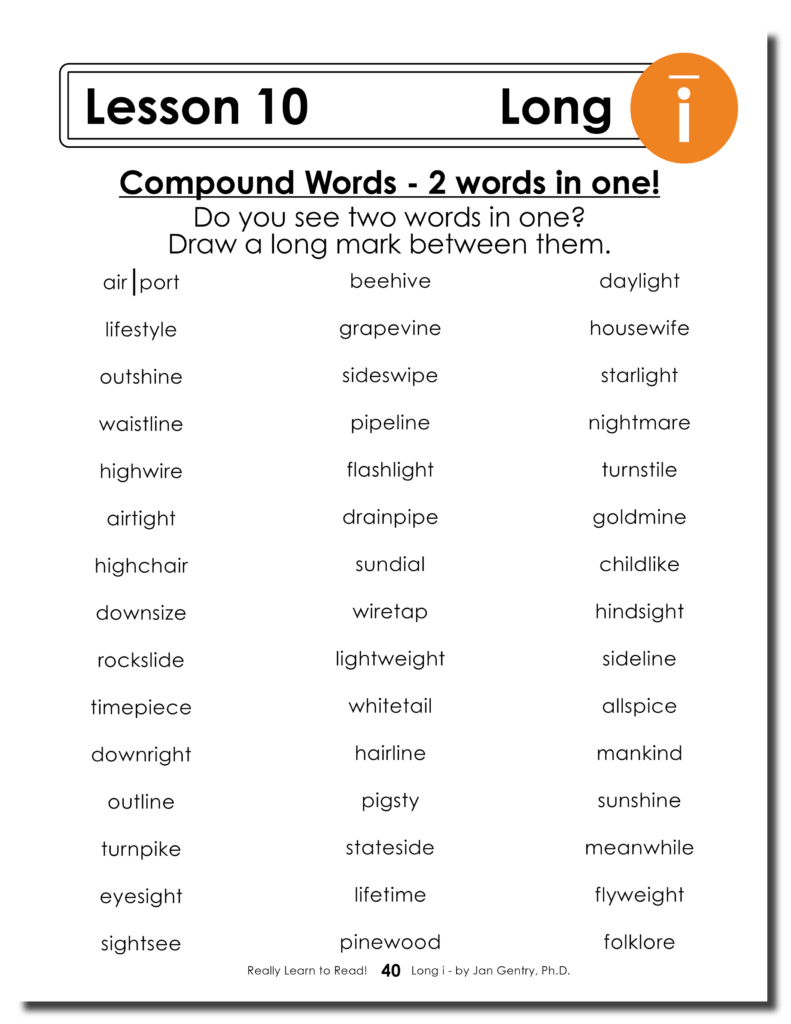
Compound Words
At the end of the Long i workbook is the enrichment activity of recognizing two words in one and drawing a line between them. When two noun words are combined into one, the new compound word has its own special meaning! This fun activity encourages readers to find other compound words, as well as creatively make up their own and explain the new compound word meaning. Compound words are especially helpful for increasing expansion of vocabulary and language proficiency as learners are encountering longer words to read and spell.
Identifying Antonyms
A final enrichment activity at the end of Long i is the matching of opposite words. This hands-on activity of drawing lines to words with opposite meanings strengthens a reader’s comprehension, vocabulary, and critical thinking skills. Knowledge of antonyms builds background knowledge, requires determination of word associations, and sparks the realization that words can have multiple meanings and spellings.
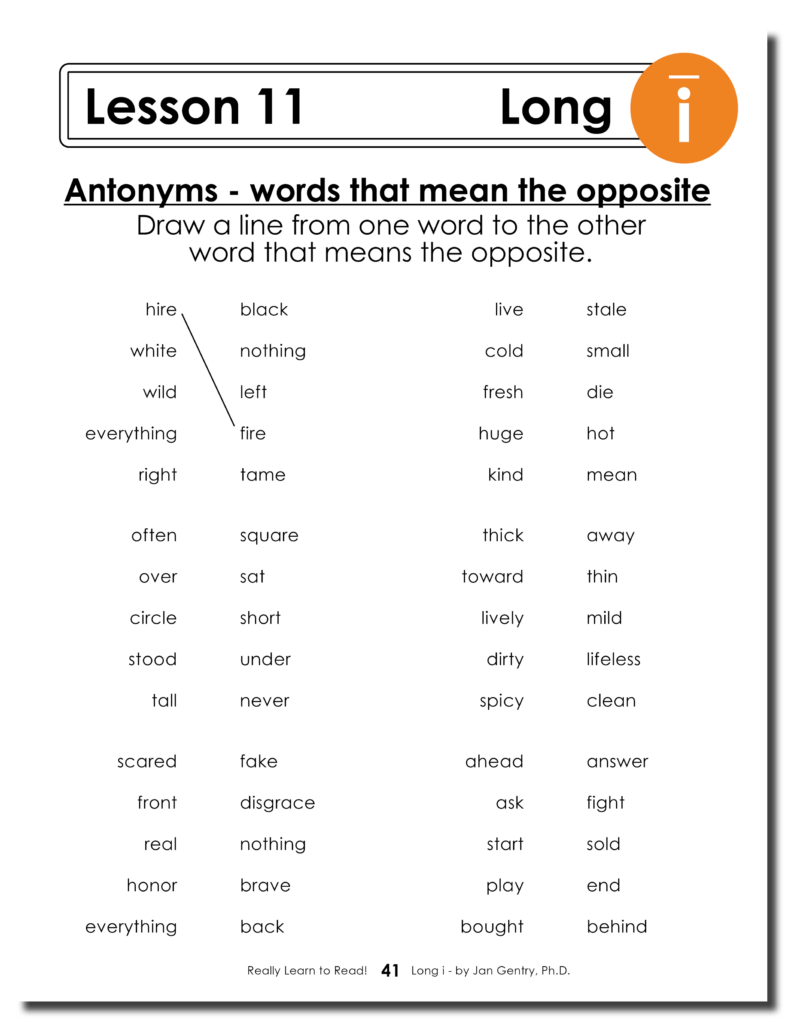
Teacher Edition
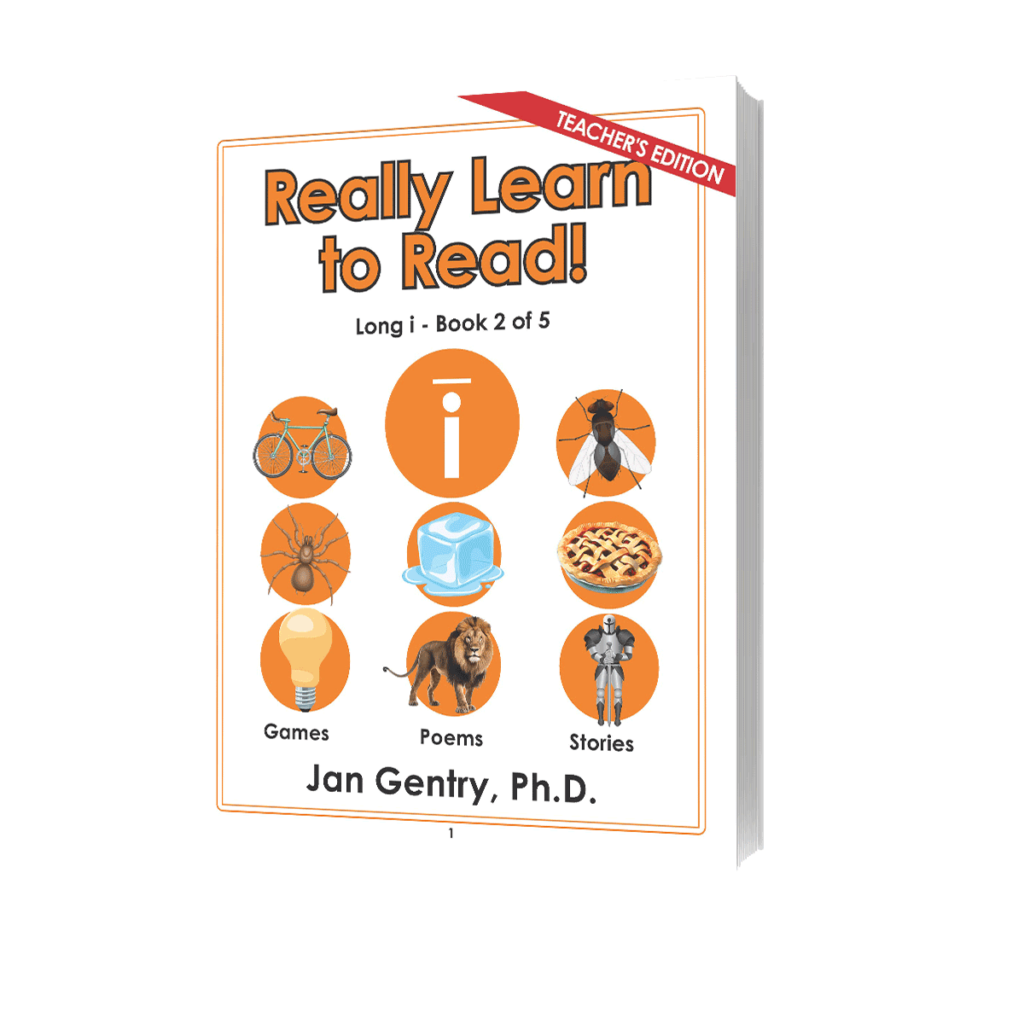
In addition to the Long i – Book 2 for the student, the Teacher Edition book includes:
- Answers to questions and activities in each lesson, written in red for easy recognition
- Phonics and Decoding Skills listed in specific detail for each lesson
- Reading Comprehension Skills listed for each question in the poems and stories
- Quick Reference Guide to help quickly target specific areas of attention
This edition provides the reading instructor with a carefully designed, systematic, true phonics-based curriculum.
Answers
The Long i Teacher Edition, the same as the student’s copy, provides easy to read answers in red print for all questions and activities in each lesson. Evaluating a student’s strengths and weaknesses in phonics and decoding skills, comprehension, vocabulary, and spelling skills is simplified in this format. For some questions and activities, multiple answers are supportively provided for the teacher’s positive reinforcement of various responses that can be personal, creative, opinionated, and correct.
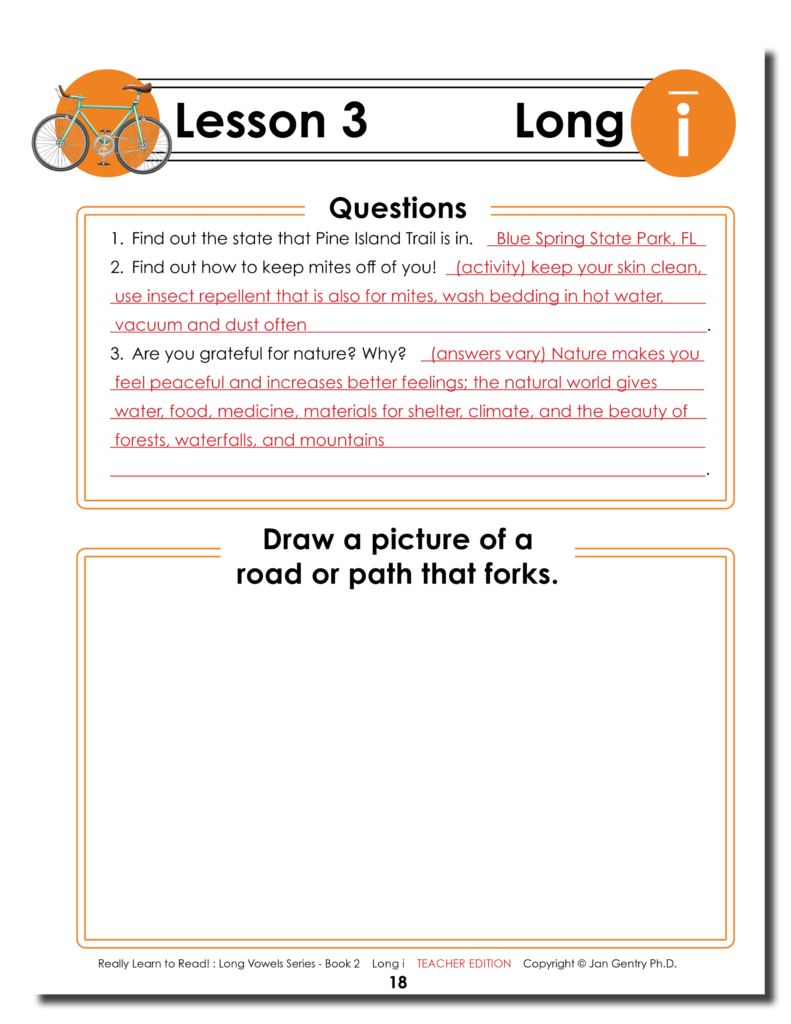
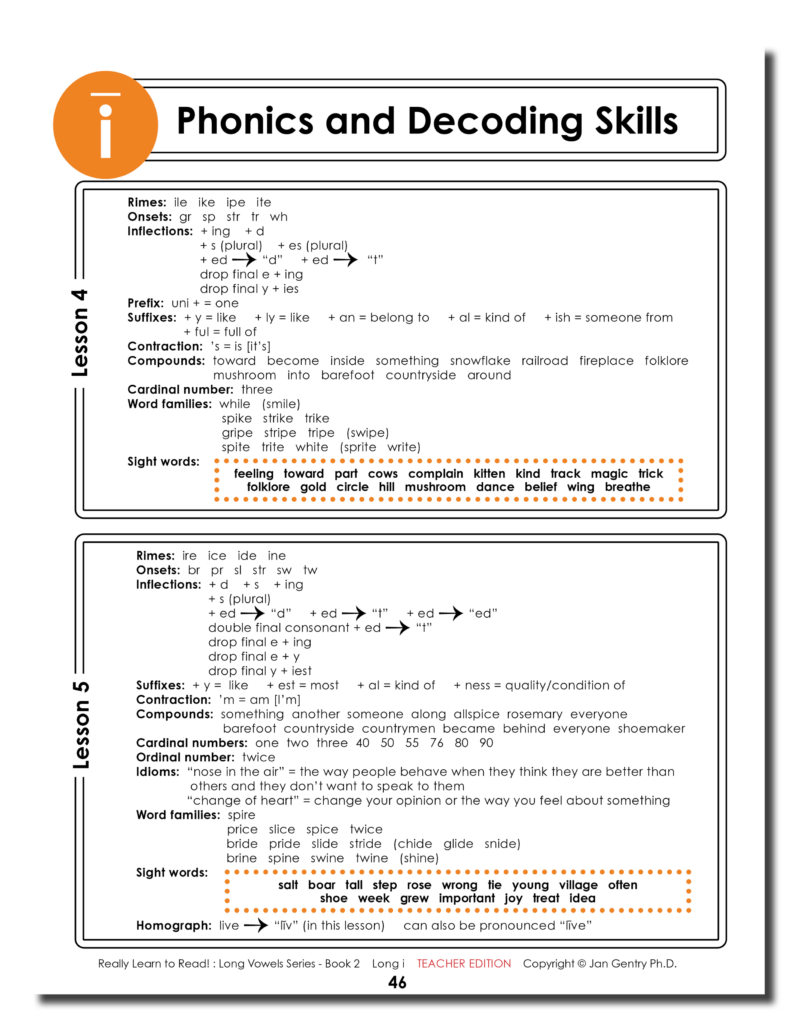
Phonics and Decoding Skills
The Phonics and Decoding Skills section presents teachers with a simple, convenient, detailed list of all reading, vocabulary, and other literacy skills in each lesson: long i word family endings, beginning sounds, inflected endings, prefixes and suffixes, contractions, compound words, abbreviations, cardinal and ordinal numbers, dates, idioms, word symbols, long i word families, sight words, and homographs. This condensed format allows teachers to easily access skills to prepare for instruction or to review skills that need more practice.
Reading Comprehension Skills
The Reading Comprehension Skills section is a valuable resource in simple table format that allows teachers to match questions and activities in all lessons to their skill objectives. Objectives include critical thinking, vocabulary meaning, real life application, evaluating to make judgment, drawing conclusions, using references, classifying, and using prior knowledge. Teachers can conveniently monitor the categories of comprehension skills demonstrated by the student that are emerging, needing practice, or being mastered as the reader progresses through Grades 2-6.


Quick Reference Guide
The Quick Reference Guide in chart format provides teachers with the prompt identification of skills in each lesson. A review of the condensed skills categories includes phonetic rimes and their onsets, inflections, prefixes and suffixes, contractions, compounds, abbreviations, dates and numbers, idioms, and word symbols. This reference tool is excellent for teachers to highlight and make notes of skills to be learned or skills needing review for reading success.
Order PDF Version
Each book is available individually, or as a set with the other books in the series. The PDF format allows teachers to tailor lessons to their students’ needs by printing specific sections at a time. You’ll be impressed by the progress learners make while having fun mastering the English language.



